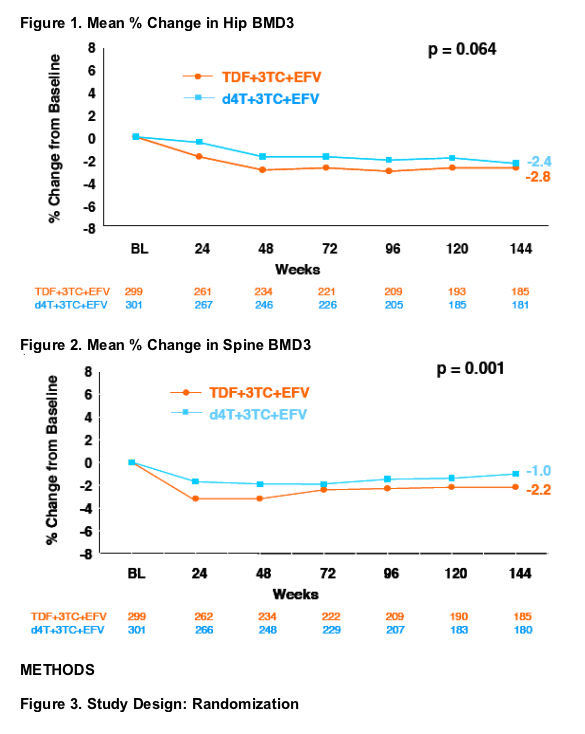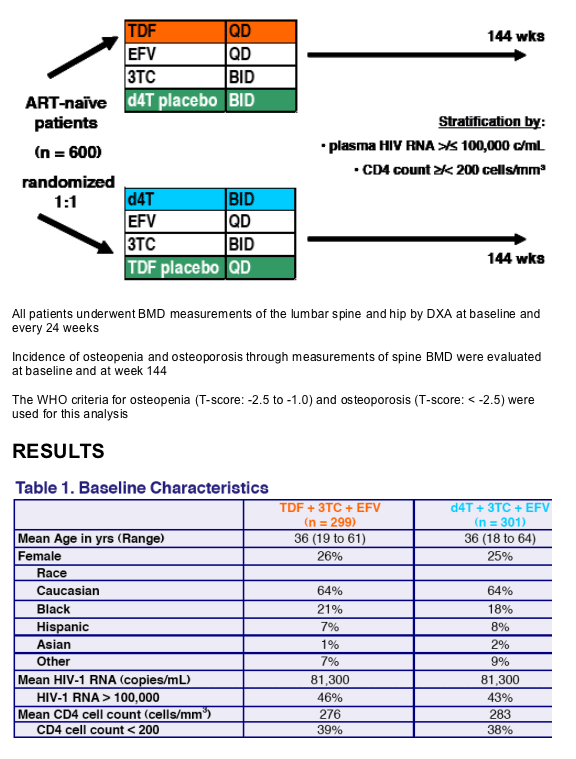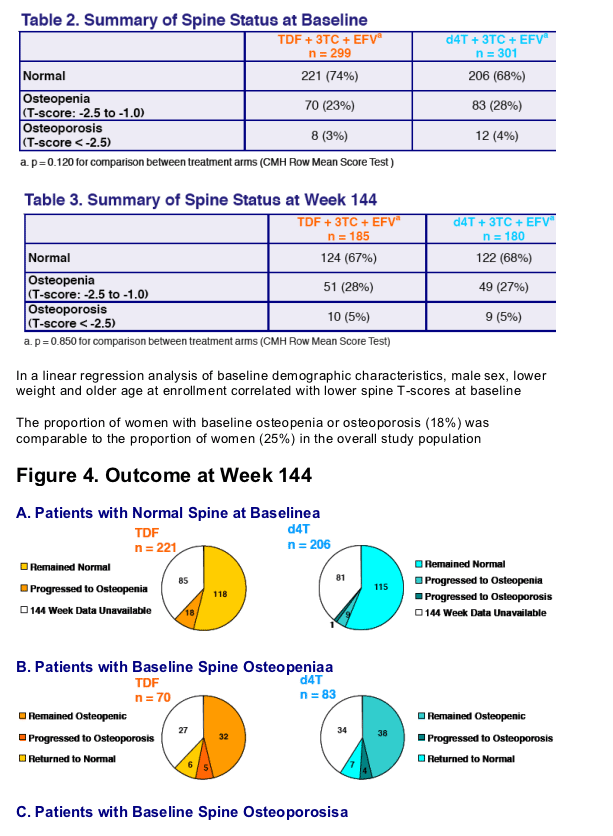 |
 |
 |
| |
Bone Loss at Baseline and Week 144 in Study 903 TDF vs d4T + EFV
|
| |
| |
"Similar Incidence of Osteopenia and Osteoporosis in Antiretroviral-Naive Patients Treated with Tenofovir DF or Stavudine in Combination with Lamivudine and Efavirenz Over 144 Weeks"
Reported by Jules Levin
9th International Congress on Drug Therapy in HIV Infection
November 9-13, 2008 Glasgow, UK
W Powderly1, C Cohen2, J Gallant3, B Lu4, J Enejosa4, and AK Cheng4 for the Study 903 Team
d4T placebo BID
1Univ College, Dublin, Ireland; 2Community Research Initiative, Boston, Massachusetts, USA;
3Johns Hopkins Univ School of Medicine, Baltimore, Maryland, USA; 4Gilead Sciences, Foster City, California, USA
Background
Osteopenia and osteoporosis are observed in patients with HIV disease and have been linked to HIV infection itself or antiretroviral therapy
Loss of bone mineral density occurs naturally around age 35 years at a rate of 0.5-1%/year1
Bone mineral density (BMD) of lumbar spine and hip, as measured by dual energy x-ray absorptiometry (DXA), is the standard method used to diagnose osteopenia and osteoporosis, with spine BMD being more sensitive to effects of drugs2
Over 144 weeks in Study 903, both TDF and d4T arms experienced decreases in bone mineral density (BMD) which were similar at the hip but greater at the spine for the TDF arm3
-- Bone loss was not significantly different between women and men through 144 weeks4




In the overall study population, 5 (2%) bone fractures were seen in the TDF arm compared to 11 (4%) in the d4T arm
-- All fractures were associated with trauma except for 1 vertebral compression fracture on the d4T arm
-- No fractures occurred in women
No fractures occurred in patients who had osteoporosis in spine at baseline or at week 144 (n = 30)
AUTHOR CONCLUSIONS
The high prevalence of spine osteopenia/osteoporosis at baseline in this population
suggests that BMD loss may be a consequence of HIV infection
Progression from normal/osteopenia to osteopenia/osteoporosis through 144 weeks was minimal and not significant between the TDF and d4T arms
No patient with spine osteoporosis at baseline or at week 144 developed bone fractures
No difference in the incidence of osteopenia and osteoporosis at the spine was observed between the TDF and d4T arms
|
| |
|
 |
 |
|
|